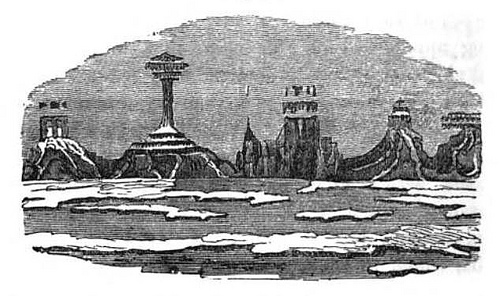
Observing the shore of Greenland in July 1820, explorer William Scoresby was surprised to see it change before his eyes:
The general telescopic appearance of the coast was that of an extensive ancient city abounding with the ruins of castles, obelisks, churches and monuments, with other large and conspicuous buildings. Some of the hills seemed to be surmounted by turrets, battlements, spires, and pinnacles; while others, subjected to one or two reflections, exhibited large masses of rock, apparently suspended in the air, at a considerable elevation above the actual termination of the mountains to which they referred.
All of this was continually changing even as he watched, Scoresby writes. But “notwithstanding these repeated changes, the various figures represented in the drawing had all the distinctness of reality; and not only the different strata, but also the veins of the rocks, with the wreaths of snow occupying ravines and fissures, formed sharp and distinct lines, and exhibited every appearance of the most perfect solidity.”
